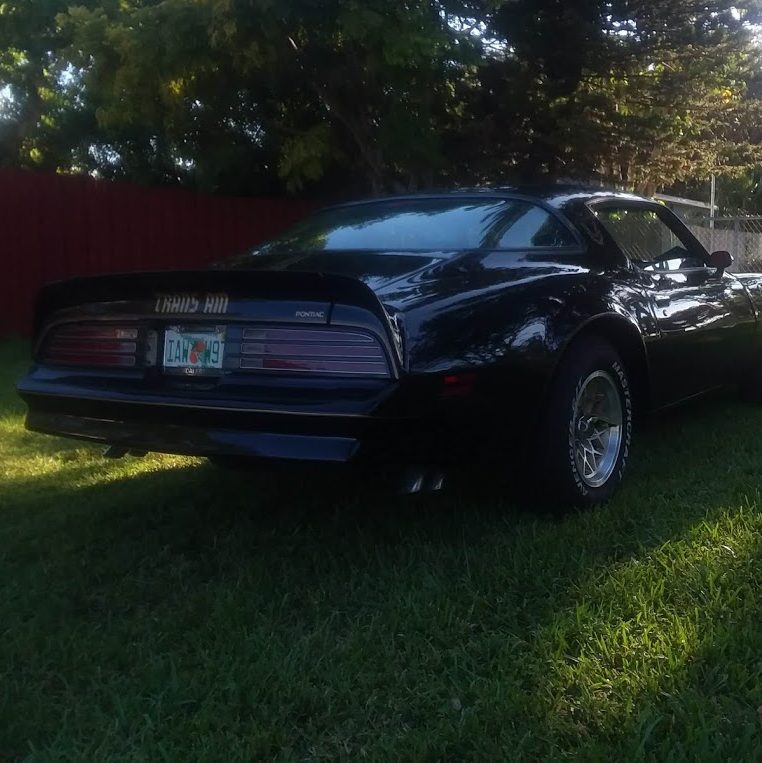1975 Trans Am The End Has Arrived
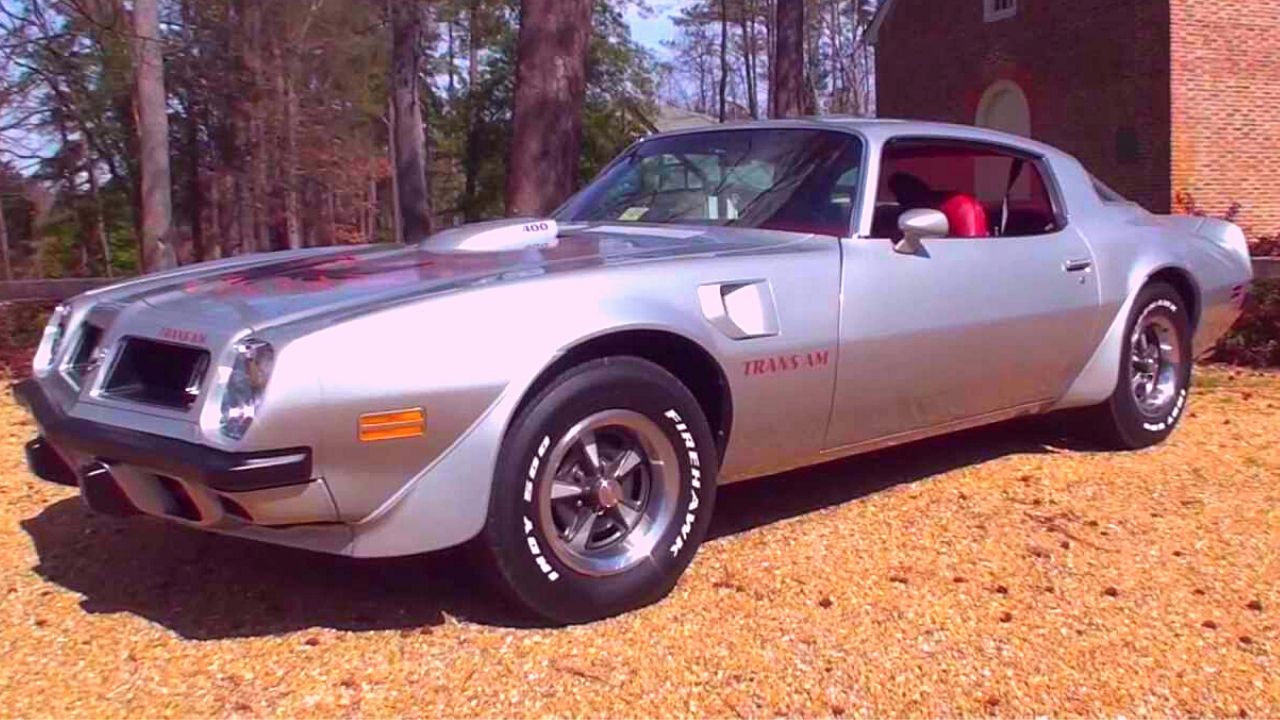
The 1975 Trans Am had many changes the signaled that the end of all fire breathing go fast scare your grandmother Musclecars has left the building. This would be the first year for the Catalytic Converter that choked the last life of whatever the Big 400 or 455 HO (Later that year) had left.
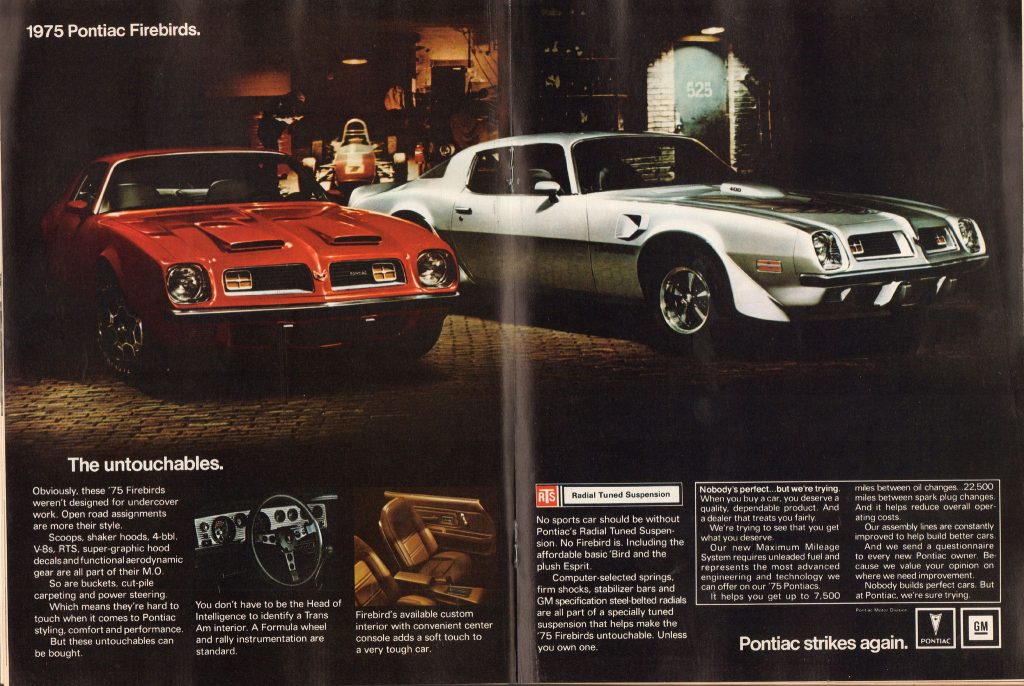
The dual exhaust manifolds left the motor but were led into a single inlet converter These “two-way” converters combine oxygen with carbon monoxide (CO) and unburned hydrocarbons (CₙHₙ) to produce carbon dioxide (CO2) and water (H2O). The catalyst support or substrate. For automotive catalytic converters, the core is usually a ceramic monolith that has a honeycomb structure (commonly square, not hexagonal). (Prior to the mid 1980s, the catalyst material was deposited on a packed bed of alumina pellets in early GM applications.) Per Wikipedia
No matter how Wikipedia explains it this was still bad if you wanted a fast car. Many owners hollowed them out in states with no emissions testing , in later years they added dual converters one on each side to make it true dual exhaust again. You see the other big issue was no more true dual exhaust, on V8 for V6 motors the exhaust would start out as dual then go into one converter then the converter was a single outlet that went all the way to the back of the car. Into a single muffler with either one or two exhaust tips, on the F-Body’s the exhaust would split before the muffler.
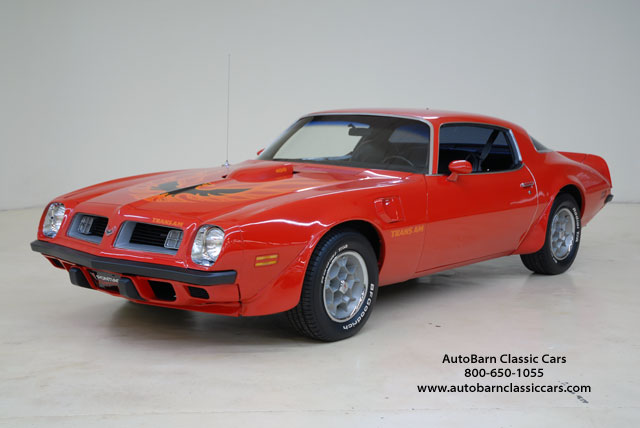
In to little muffler like shapes that helped quiet the cars exhaust note down to make it quieter inside the car. Did they affect the exhaust flow too many argue yes and no but to me anything added to an already restricted system can’t really help them.
We are already talking about a 10 to 20 horsepower loss here so yes on a motor that is putting out under 200 horsepower these cars really felt the difference from 1974.
1975 Was the first year of the High Energy Ignition, or HEI for short this meant no more points and the coil was integrated into the distributor cap there was an internal ignition module that took care of everything. And this was the most awesome thing in the car world. Points were a major hassle at times and could leave you stranded on the side of the road.
Hard startups in certain types of weather and I could go on, in fact, it’s actually common for many older cars having an HEI conversion it’s just a way better ignition system. And the module would last over 100,000 miles my ’76 Trans Am had its original module in it. But the first thing I did was get a new one because when that thing goes it will also leave you stranded.
1975 Marked the first year of the wrap around rear window, I actually prefer the earlier back windows. To me there was just no reason to change it. And the 1975 Trans Am also had a different nose than its 1974 older brother. The turn signals were in the grill and I am actually a fan of that really. I love the 74 front too but I’m a little partial to the ’75 I don’t know why.
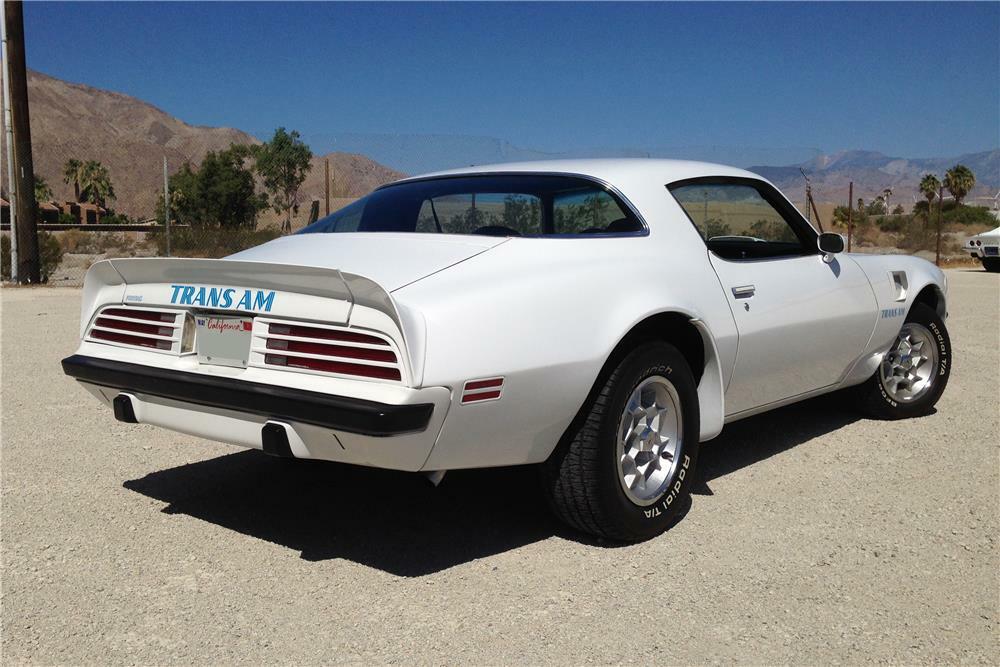
Transmission choices were the same either a 3 Speed automatic or 4 Speed manual. But because of the catalytic converter the smaller 350 Turbohydramatic was used instead of the Turbo 400 and quite honestly the TH 350 was a great transmission too and with 185 to 200 horsepower you really didn’t need the stronger TH 400.
The 400 could be had with the both Automatic and Manual but the later year 455 HO could only be had with the 4 speed. Now speaking of engines the 400 had 7.6 to 1 compression and 185 Horsepower making 310 ft pounds of torque and yes this is as slow as it sounds in fact even slower. Many and I mean many people complained about this, And even many dealerships.
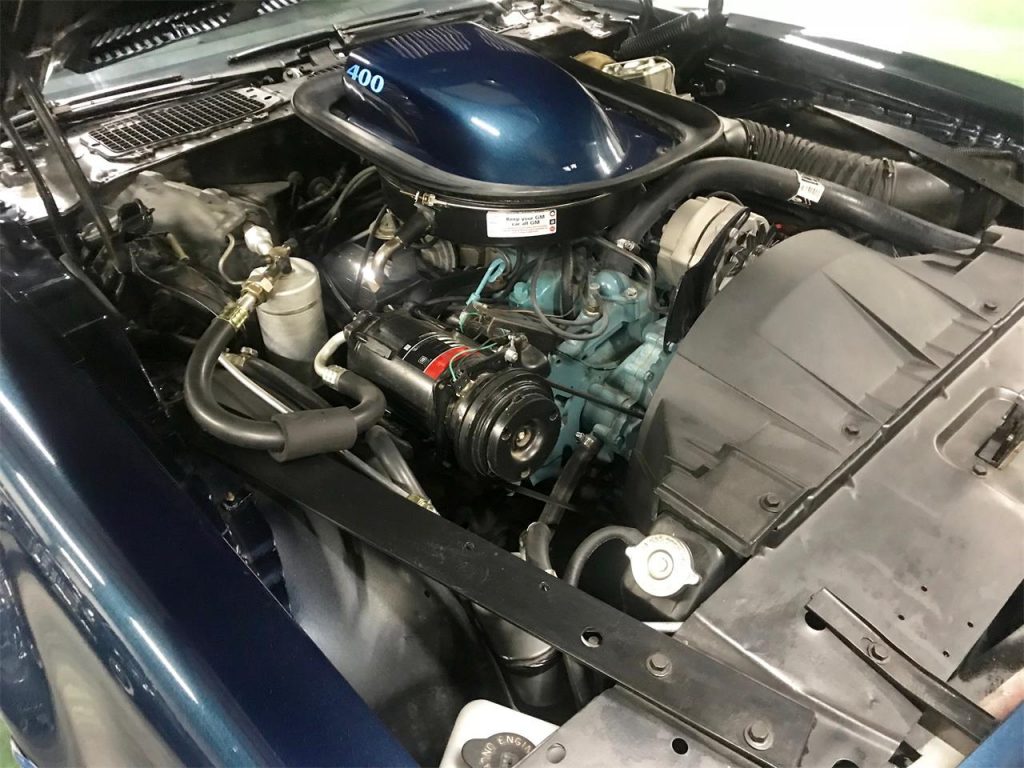
So GM management added a mid year so to speak 455 HO option at 200 Horsepower at 350 Ft pounds of torque with a 3:23 rear axle and dual exhaust from the Catalytic Converter back with dual resonators to give it a little sound. But basically what Pontiac did was take a station wagon 455 add the HO at the end of it and called it a day. Was it quicker than the 400 not by much.
Not to mention Chevy stopped making the Z28 for 1975 and 1976, so there was really no competition. The Corvette lost its Big Block 454 that year so again there was no real competition at all. 1975 was a bad year if you wanted a fast car.
The interior was the same as the previous year some colors were added and that’s about it.
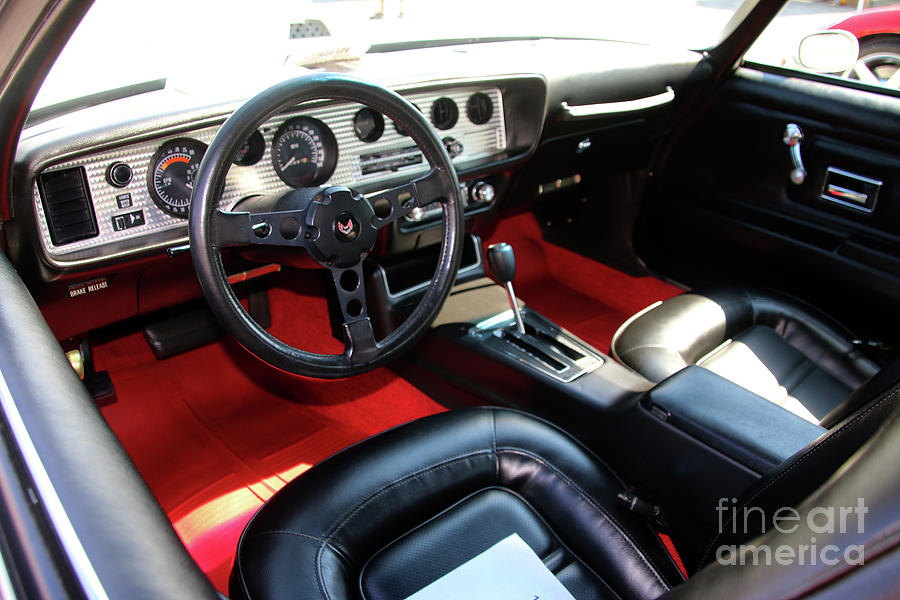
1975 White Pontiac Trans Am-Interior-0538 Photograph by Gary Gingrich Galleries
Now if you have a 455 HO 4 Speed car its a rare one only 857 were made compared to the 26,417 of the 400 cars were made. I for one am a 4-speed guy so I’d love to have a 455 4 Speed.
Was the 1975 Trans Am a disappointment? I’d say it was even 1974 had some decent power ratings not including the mighty underrated SD 455. But 1975 marked a new chapter in American Performance Muscle. Things for the Trans Am would not look up until 1978 1978 when the 400 would get a boost to an underrated 220 Horsepower boost.
But by 1980 it was back down to an ultra show 210 horsepower Turbo version and an even lower horsepower 301. The only difference is that in 1975 we are coming off of a High Horsepower Musclecar Era. In 1970 an 1971 you still had some decent power plants to choose from.
By 1980 we were used to slow cars that looked good, like the old saying goes you can’t fight City Hall. The government was serious about its emissions, and fuel economy and when they get serious well we have to accept things and sadly slow Factory Musclecars was one of them.

Not only am I the founder of The JRX Foundation I am also the host of JRX Reviews. I love driving my Trans Am everywhere even state to state when we are helping people. Well weather permitting, She puts a lot of smiles on people’s faces and I love seeing that. This site does contain affiliate links at no extra cost to the customer we get a commission and that goes to keep the doors open and the people fed at our charity.
